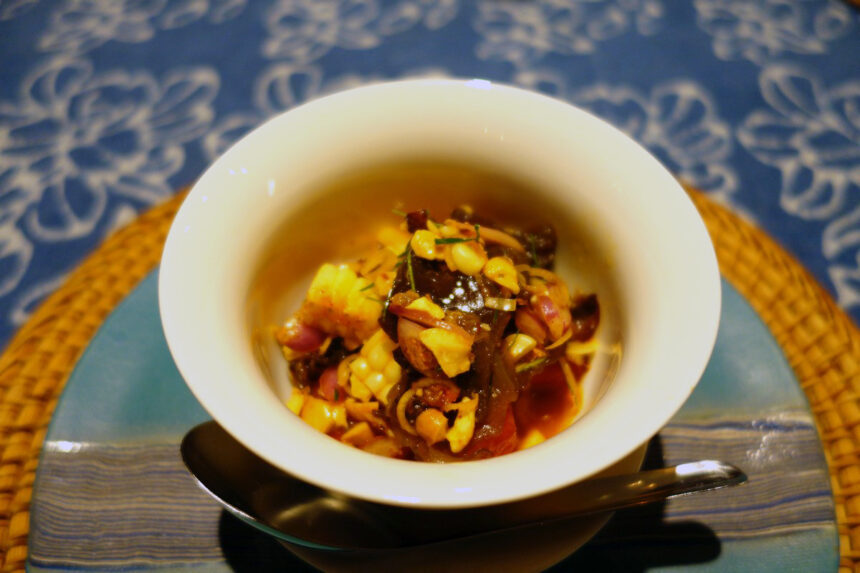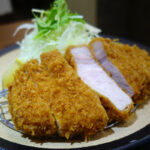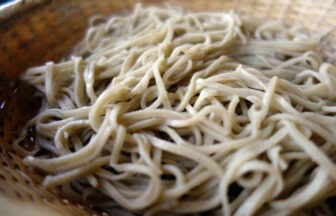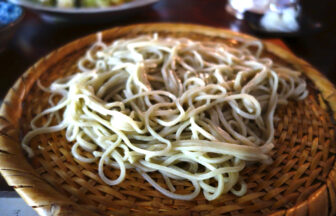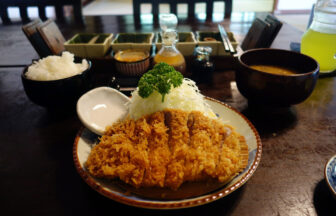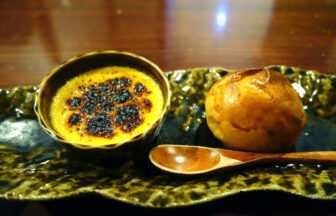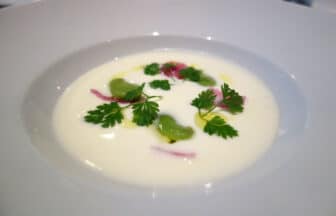In Thai, “GUUUT” means “to be born” or “to create.”
It’s a unique restaurant that aims to create dishes where the ingredients from Ina Valley meet Thai cuisine, and where encounters with fermented ingredients lead to culinary reactions, much like chemical reactions.
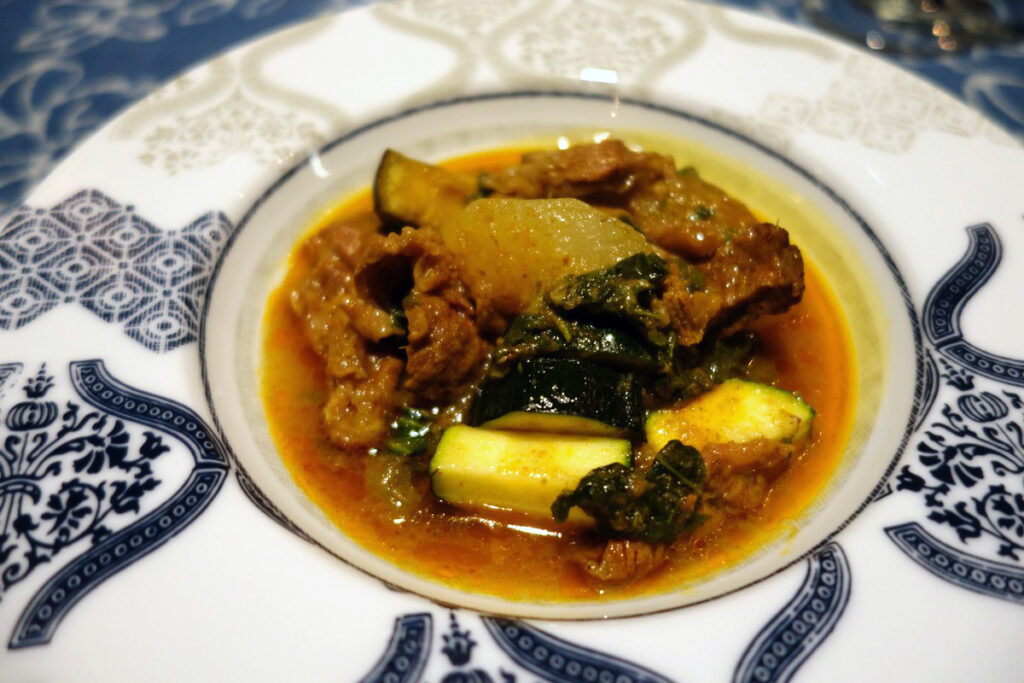
Ave. Budget: Dinner 7,000-10,000 JPY
Check information on Tabelog
Restaurant features
In Southern Shinshu, an interesting Thai restaurant has emerged. This restaurant grows its own vegetables and herbs, employs various fermentation techniques, and makes all its seasonings from scratch.
I first heard rumors about this place from chefs in the Koshin region about two years ago. It was quite surprising to hear about Thai cuisine, especially one focused on fermentation, and even more so with a gastronomic approach, in this unlikely location.
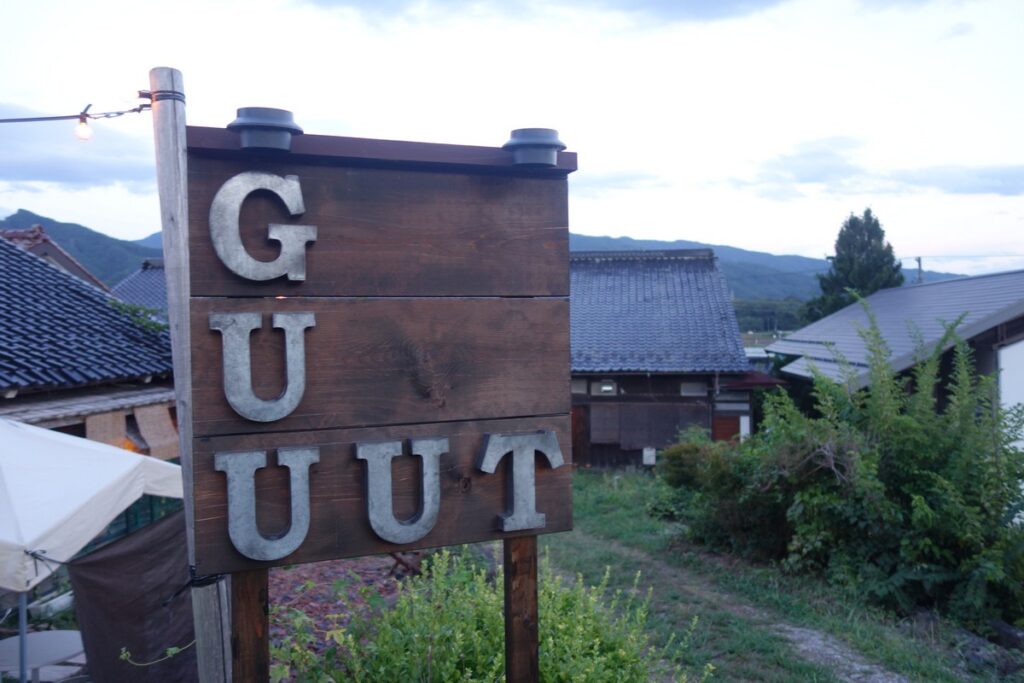
Intrigued by this unexpected concept, I thought, “Hmm, I’d like to visit someday.” As time passed, this restaurant gained popularity. It has been featured in special articles about Nagano’s gastronomy and has become one of the top restaurants in Nagano, despite the absence of Michelin stars.
Furthermore, due to the ongoing COVID-19 pandemic, the restaurant operates with a reservation-only policy and accommodates only one party per day, with a capacity of 2 to 6 guests. Reservations are available up to three months in advance, but availability is quite limited, as advertised.
I decided to send a tentative direct message (DM) inquiry, and to my surprise, there was one available date. However, I faced the challenge of finding someone to accompany me in the Minowa area.
Just when I was about to give up hope, I learned that an acquaintance from Kansai would be in Nagano on the same day. Serendipitously, everything fell into place, and I finally had the opportunity to visit.

The restaurant is located approximately a 5-minute walk from JR Iida Line’s “Sawa Station.” Its exterior resembles a traditional Japanese house, but once inside, you’ll find a tastefully renovated space.
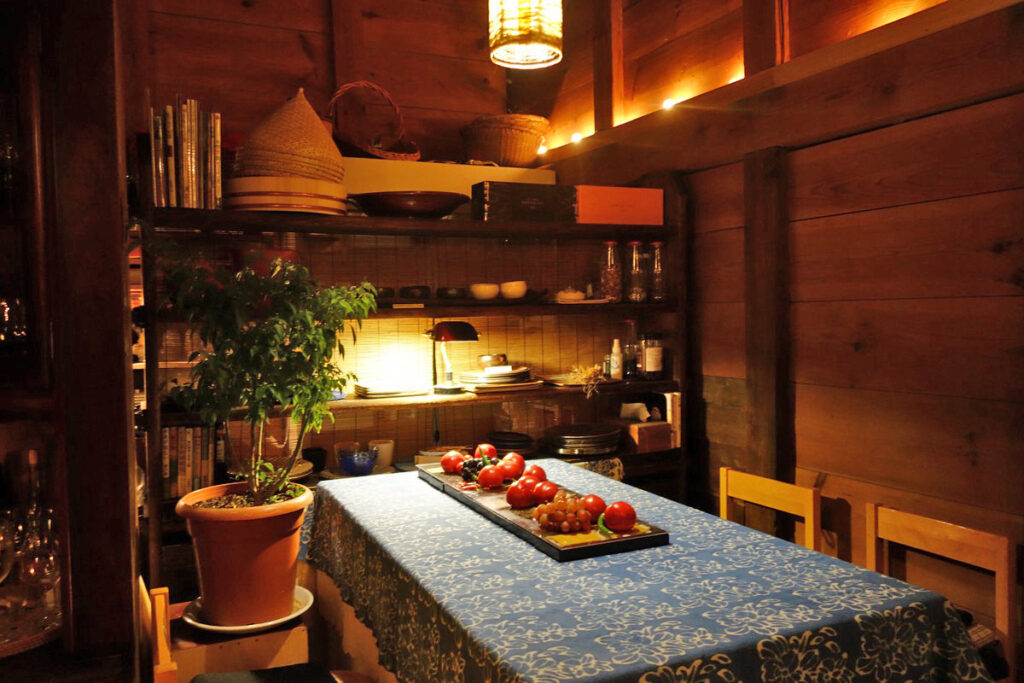
The restaurant offers only set menus, priced at ¥6,600 and ¥11,000, with the main differences being the quality of ingredients and the number of courses. For this visit, I opted for the ¥6,600 omakase course, which consisted of six dishes. They also offer alcohol pairings, and I chose the shorter pairing option priced at ¥5,500.
Connecting Thailand and the Ina Valley Through Food
While checking the drink menu, I took the opportunity to inquire about the question that had intrigued me the most: “Why Thai cuisine focused on fermentation in such an unexpected location?” According to the restaurant owner, who used to run a Japanese restaurant in Roppongi, there are many similarities between Nagano’s long-standing fermentation culture and Thai culinary culture.

It’s fascinating to think that Thai cuisine and Japanese culinary roots may share common elements. While I cannot confirm this personally, considering the geographical placement of Japan and Thailand at the opposite ends of the broadleaf evergreen forest culture, it’s easy to understand why there might be shared elements in their culinary cultures.
An Overview of the Course
Let’s dive into the details of the course:
0th Course: Snack
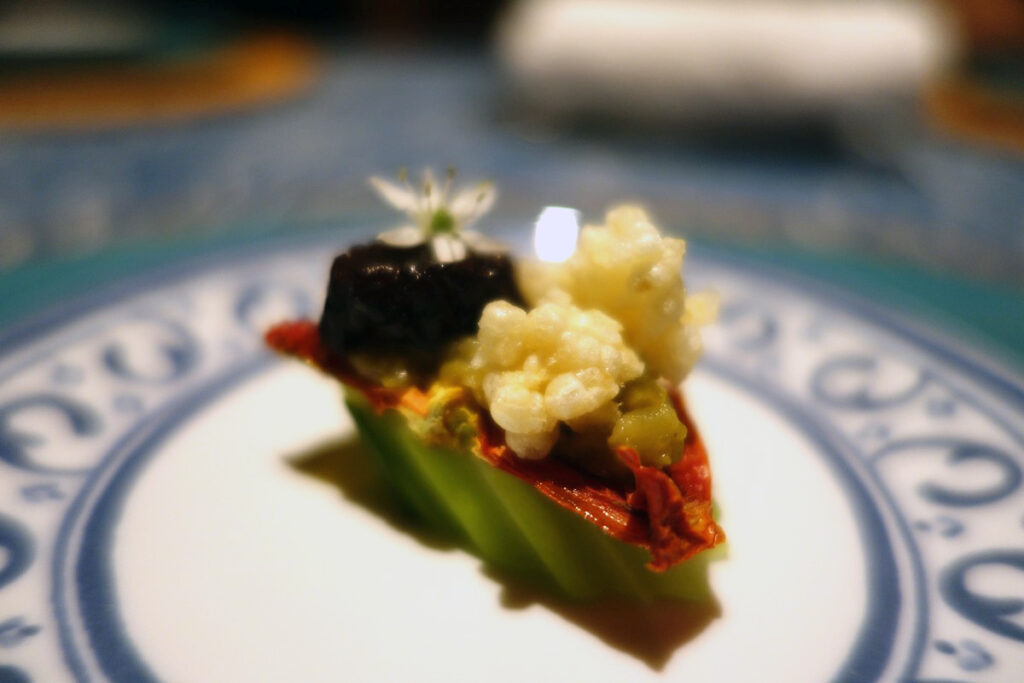
A small appetizer with cucumber as the base. It includes ingredients like botako-shio (fermented rice), Thai herbs, and more. In Bangkok’s restaurants, it’s quite common to start with a one-bite-sized “Ma Hor,” where Thai miso is placed on top of pineapple. This seems to be a variation of that.
1st Pairing: Cider

Cider from VinVie, a winery located in Matsukawa-cho, Minamishinshu.
1st Course: Amuse
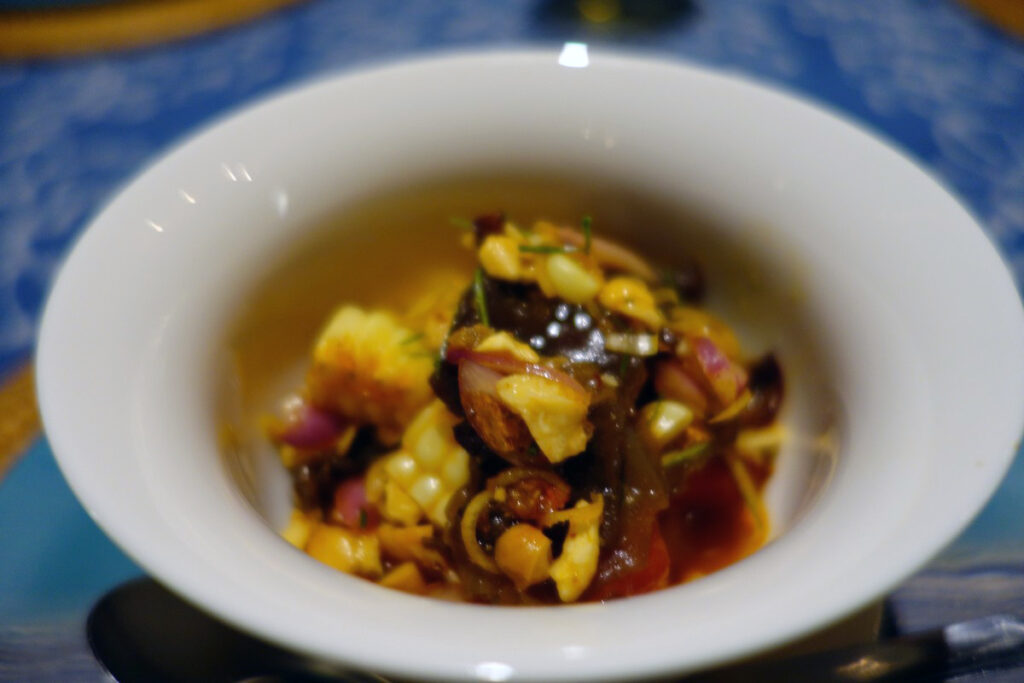
A dish consisting of corn, watermelon, and wood ear mushrooms.
2nd Course: Shrimp and Hanabiratake Mushroom Larb
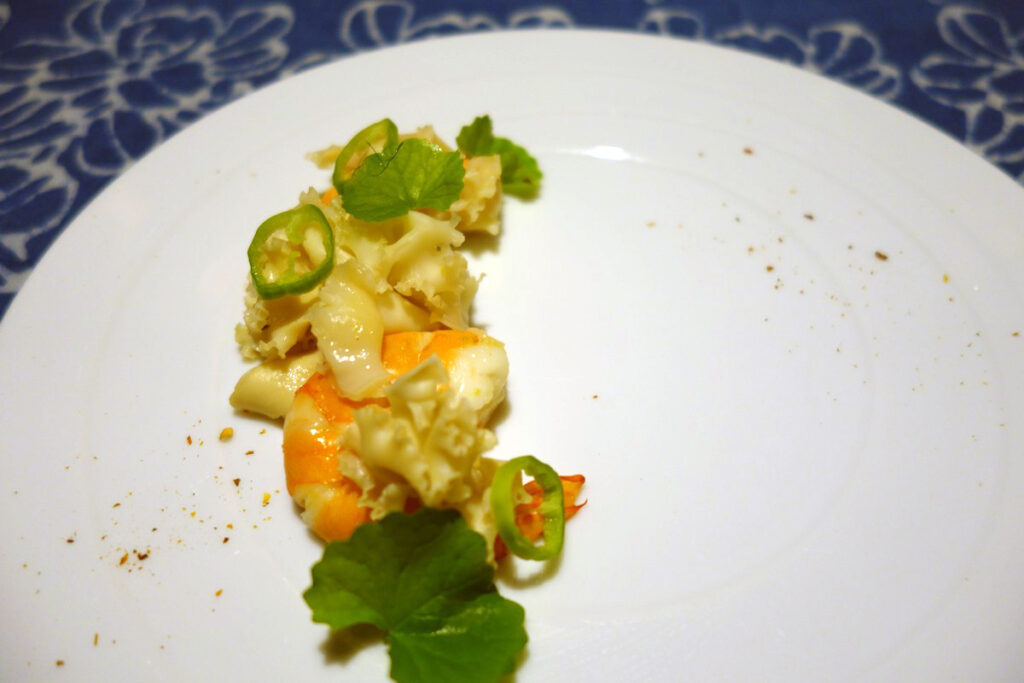
Shrimp and hanabiratake mushrooms. It’s garnished with Buabok, an herb known in Thailand as the “herb of youth,” as a finishing touch.
2nd Pairing: Rosé Wine

A fresh rosé wine called “Sahanasazuki” from Ran Seca, a winery in Yoichi, Hokkaido. It’s made by adding Niagara and Campbell Early grapes, resulting in a lively rosé.
3rd Course: Fermented Pork Herbal Soup
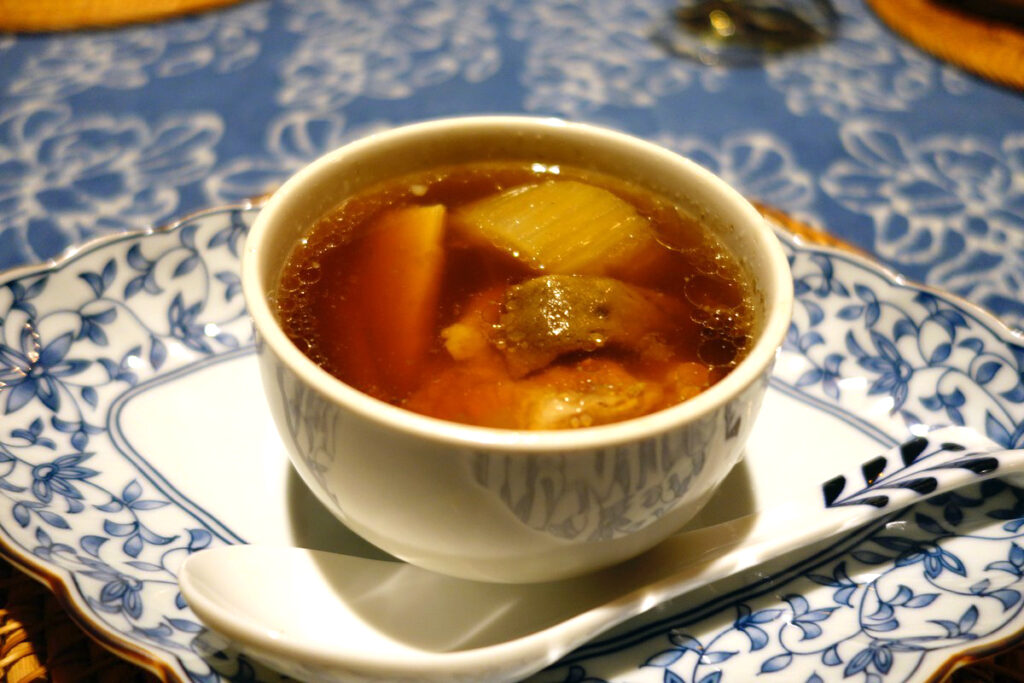
A herbal soup made with bone-in pork and Yamadoritake (porcini) mushrooms. The pork is fermented with garlic, glutinous rice, and spices, giving it a rich flavor. The addition of salted cucumbers and Natsume (Japanese olive) adds depth to the taste. This dish carries hints of South Chinese cuisine, and it’s quite reminiscent of flavors often found in Thai-Chinese restaurants. In a way, it can be associated with Thai cuisine as well.
3rd Pairing: Sake
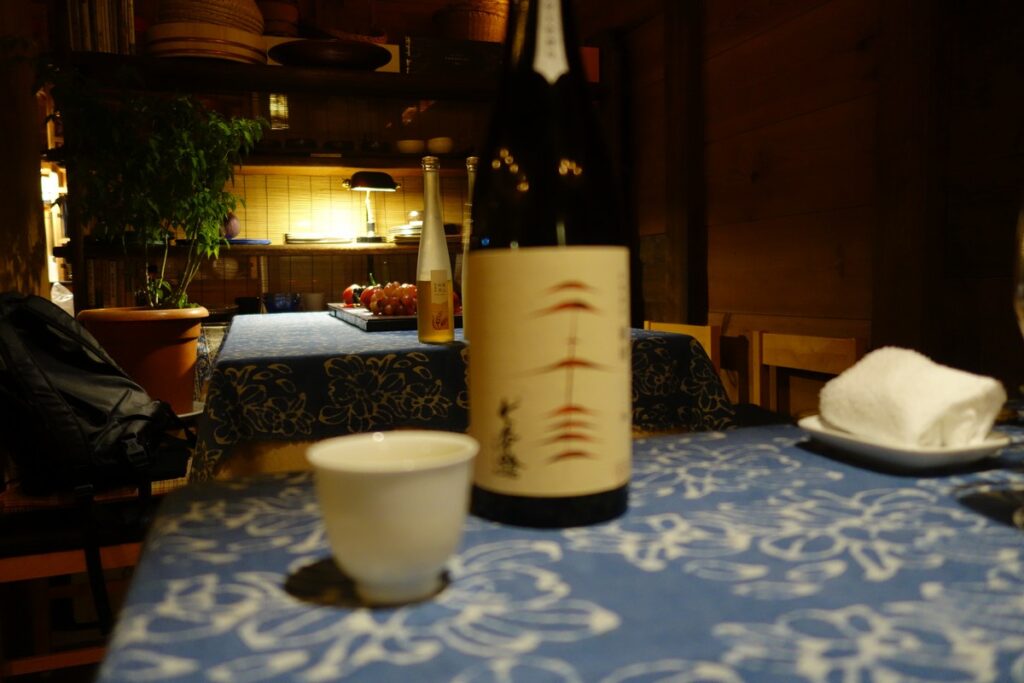
“Yamahai Junmai Kokoku 2014” from Tomita Shuzo, a sake brewery in Nagahama, Shiga Prefecture. This choice aligns well with the chef’s background in Japanese cuisine.
4th Course: Thai-Style Omelette
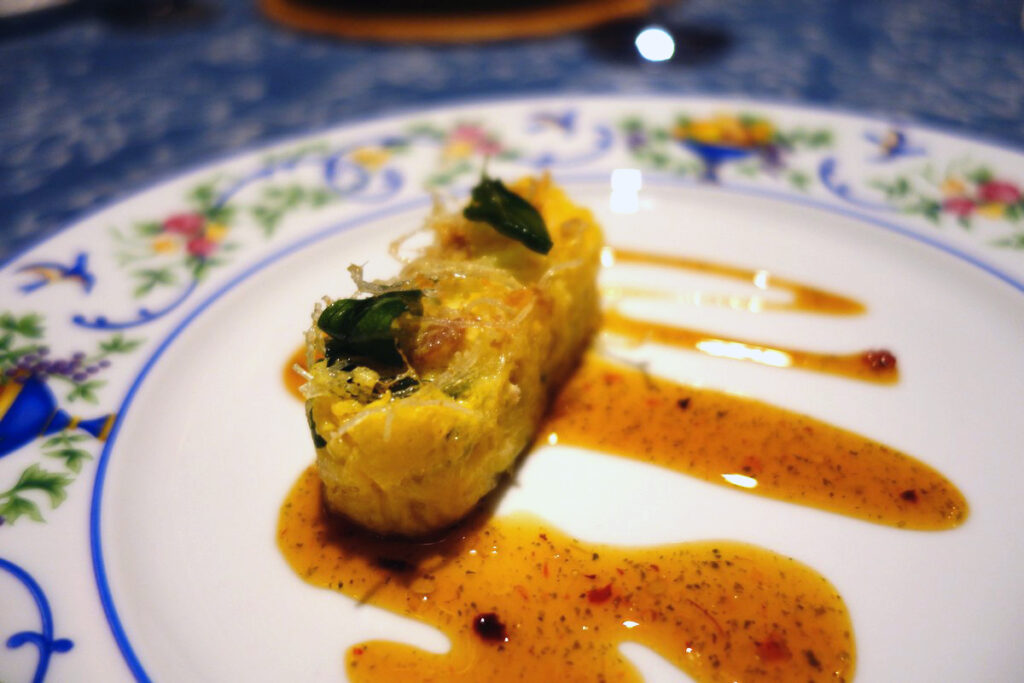
A Thai-style omelette featuring sour fermented sausage called “Neam.” The sweet chili sauce, typically sweetened with sugar, achieves depth by using sweet sake in this rendition.
3rd Pairing: White Wine
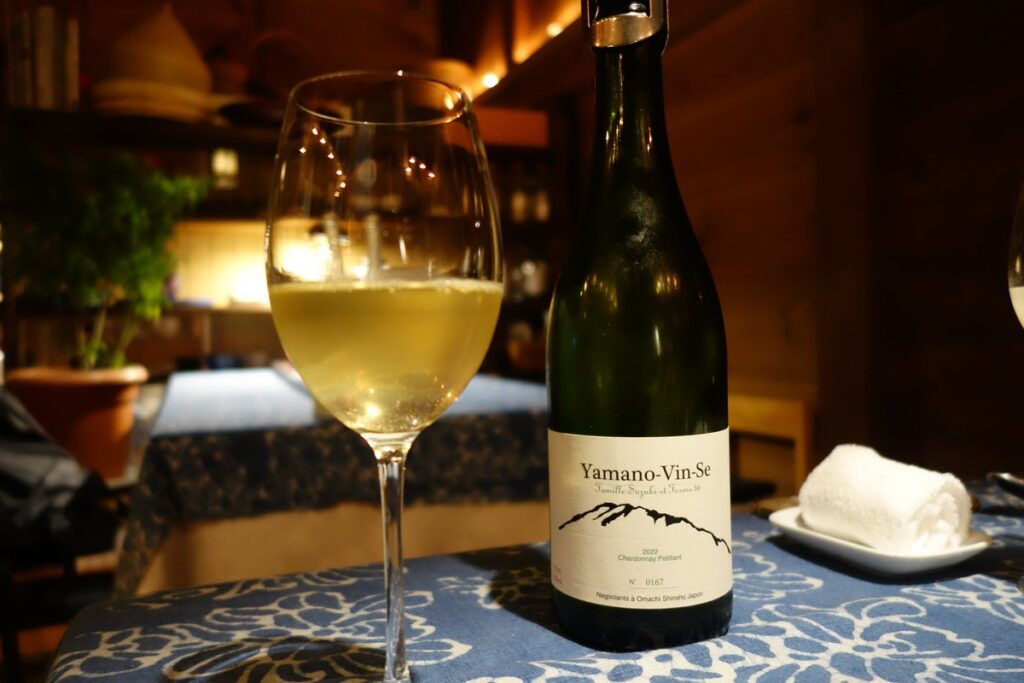
A Chardonnay from Yamano-Vin-Se in Omachi City. This white wine is characterized by its freshness, reminiscent of wines in the midst of fermentation. The contrast between this wine and the fermented dishes is quite intriguing.
5th Course: Steamed Sea Bream from Niigata

Steamed sea bream, a common Thai-style dish often seasoned with lemongrass and lime to impart Thai flavors, takes on a unique twist here. The dish features layers of vegetables that add depth to the spices.
4th Pairing: White Wine
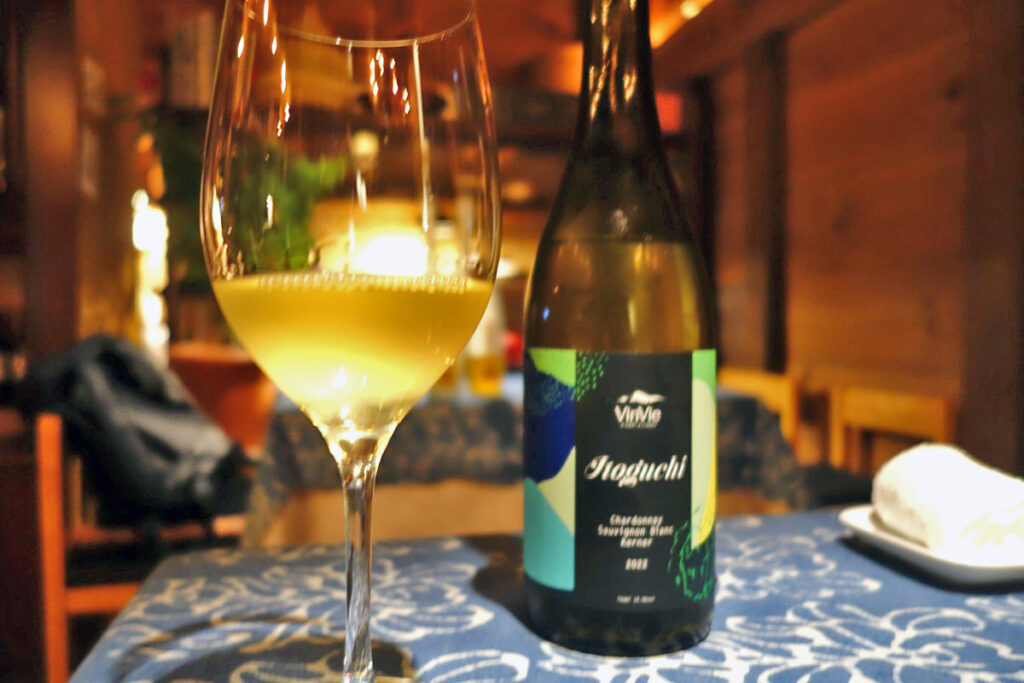
Once again from Vin Vie, this Chardonnay, known as “Ito Guchi,” has a distinct influence from barrel aging.
6th Course: Gaeng (Thai Curry)
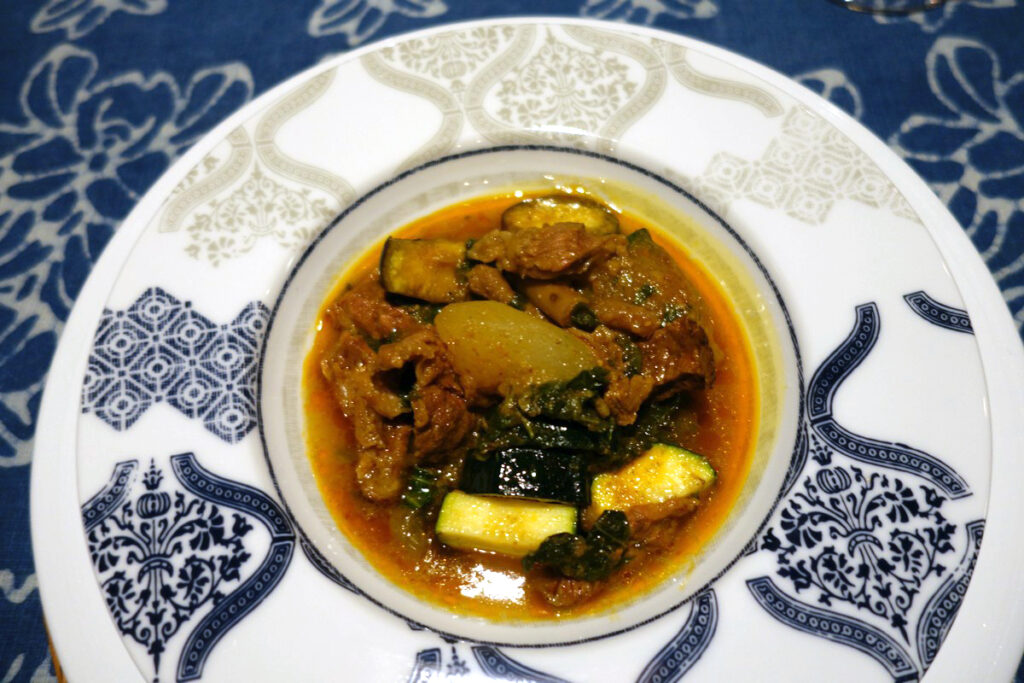
A Thai-style curry known as “Gaeng.” While chicken is commonly used in this dish, here it’s prepared with locally sourced beef from Minowa.
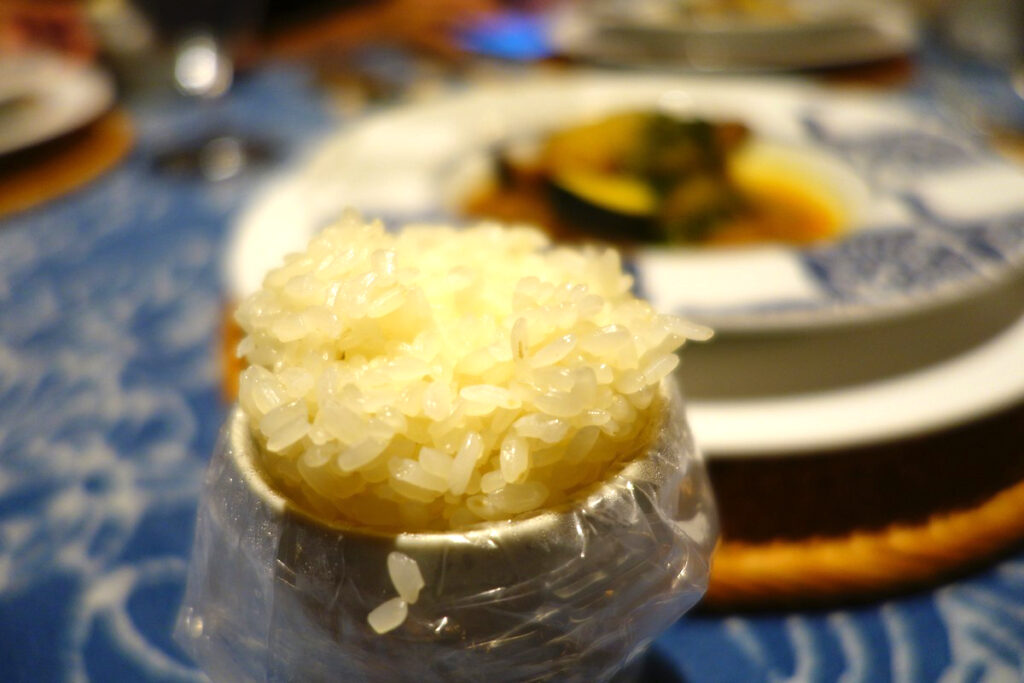
The accompanying glutinous rice is grown on-site. Ordinary Japanese glutinous rice tends to be too flavorful and sweet, which isn’t suitable for the dish, so they cultivate their own.
Cleanser

Watermelon juice infused with Thai tea and salted lime.
Dessert
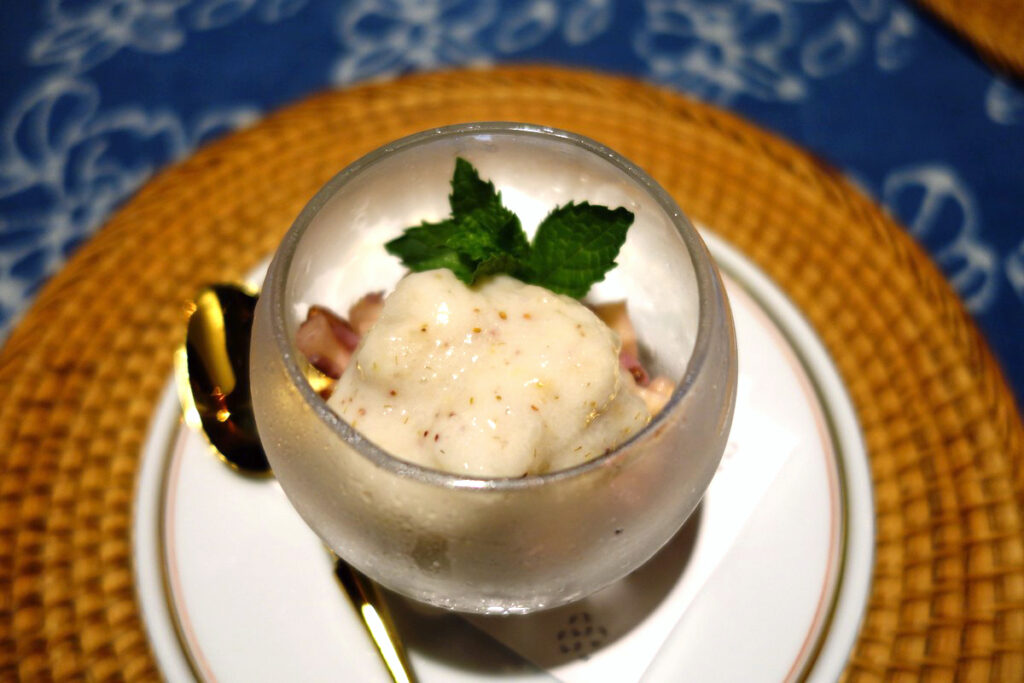
Sweets featuring Shine Muscat grapes, diced apples, taro, and simmered glutinous rice. While Thai cuisine is known for desserts like “Khao Niew Mamuang,” which combines mango and glutinous rice, this restaurant demonstrates a unique approach to utilizing these ingredients.
An Ideal Form of Local Gastronomy
To be frank, I believe this was a subtly amazing course. It’s not for comparison, but recently there’s a lot of talk about popular urban restaurants transitioning into ingredient-focused establishments rather than traditional eateries. There’s nothing wrong with an emphasis on ingredients, but it often results in a parade of high-end branded ingredients, like a lineup of celebrities at a Premier League football club, say, Chelsea. However, just as Chelsea may have star power but struggles to win consistently, these popular restaurants, while they have their own merits, often lack cohesiveness and fail to achieve a high level of overall excellence.
Certainly, Guuut also places great importance on ingredients, but their approach is entirely different. They are emblematic of places that might not shine on their own, like their in-house-cultivated glutinous rice, but they fulfill their roles exceptionally well within the dishes. This piqued my interest because, similar to a football club analogy, it’s akin to Liverpool under Klopp
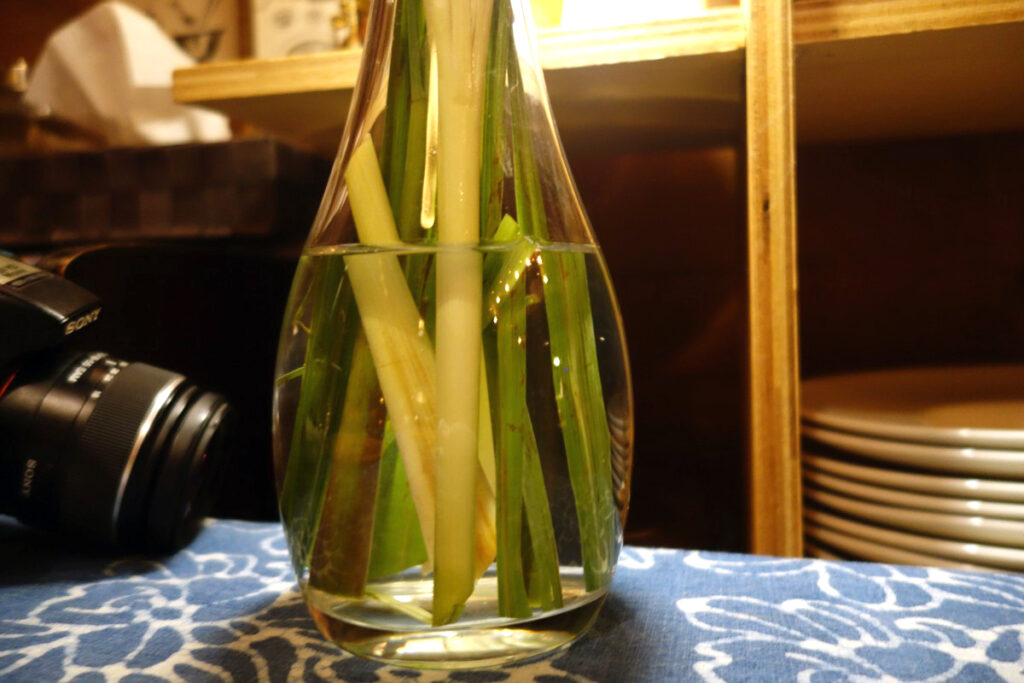
Recently, I’ve been feeling the urge to explore local gastronomy, destination dining, and focus on regional cuisine. To take a stance like the latter, it might require a more favorable environment than a metropolitan setting.
Why Gastro Thai Cuisine in Such a Location?
I feel like I’ve arrived at one of the answers to this question in my own way.
Menu
【Course】
“Chef’s Choice” ¥6,600
“Chef’s Choice” ¥11,000
*The menu and prices are provided for reference only. Please keep in mind that they may change depending on the season and the availability of ingredients.
How to make a reservation
By reservation only. Limited to one group per day, accommodating only 2 to 6 guests.
You can inquire through the official website.
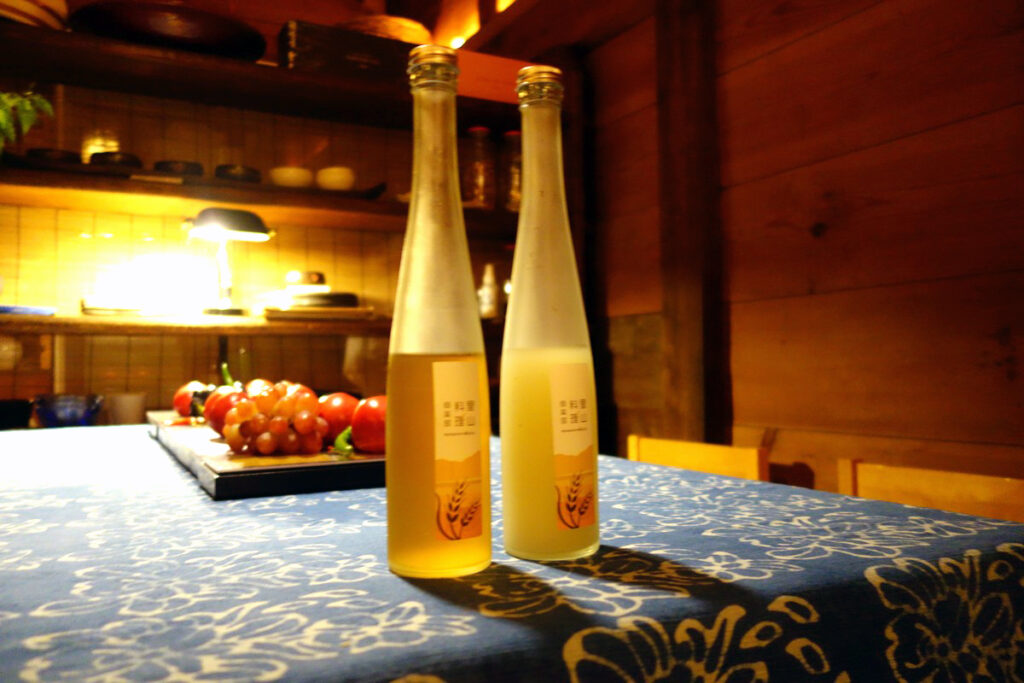
Map/Access
It’s approximately a 5-minute walk from JR Iida Line’s “Sawa Station.”
–Restaurant Information on “”–
Business Hours:
Closed:
Phone Number:
Address:
Official website is here.
